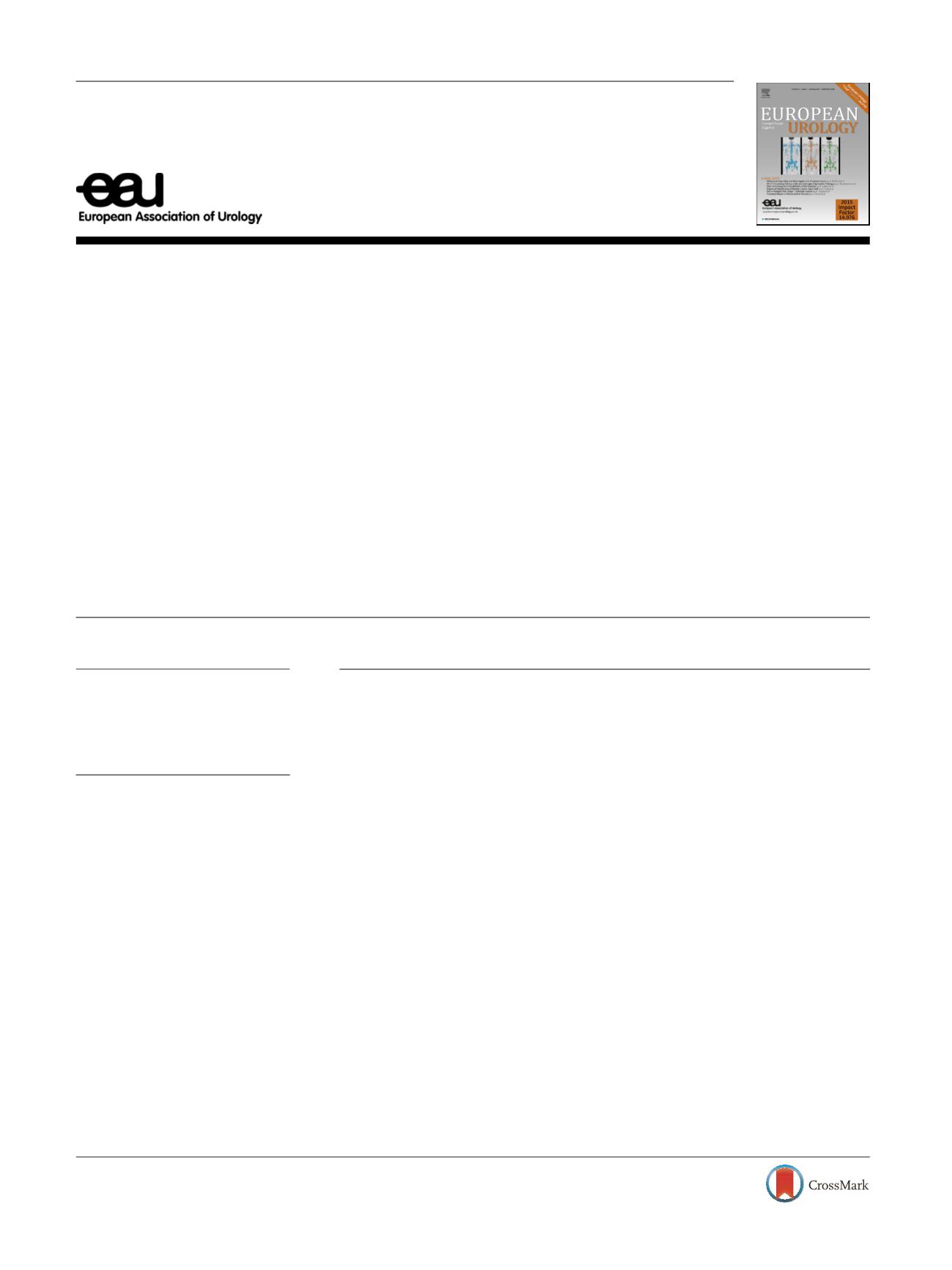

Platinum Priority – Prostate Cancer
Editorial by Wesley W. Ludwig, Ashley E. Ross and Philip M. Pierorazio on pp. 774–775 of this issue
Clinical Outcomes for Patients with Gleason Score 9–10 Prostate
Adenocarcinoma Treated With Radiotherapy or Radical
Prostatectomy: A Multi-institutional Comparative Analysis
Amar U. Kishan
a , * ,Talha Shaikh
b ,Pin-Chieh Wang
a ,Robert E. Reiter
c ,Jonathan Said
d ,Govind Raghavan
a ,Nicholas G. Nickols
a , e ,William J. Aronson
c , f ,Ahmad Sadeghi
e ,Mitchell Kamrava
a ,David Jeffrey Demanes
a ,Michael L. Steinberg
a ,Eric M. Horwitz
b ,Patrick A. Kupelian
a ,Christopher R. King
aa
Department of Radiation Oncology, University of California, Los Angeles, CA, USA;
b
Department of Radiation Oncology, Fox Chase Cancer Center,
Philadelphia, PA, USA;
c
Department of Urology, University of California, Los Angeles, CA, USA;
d
Department of Pathology, University of California, Los
Angeles, CA, USA;
e
Department of Radiation Oncology, Veteran Affairs Greater Los Angeles Healthcare System, Los Angeles, CA, USA;
f
Department of Urology,
Veteran Affairs Greater Los Angeles Healthcare System, Los Angeles, CA, USA
E U R O P E A N U R O L O G Y 7 1 ( 2 0 1 7 ) 7 6 6 – 7 7 3available at
www.scienced irect.comjournal homepage:
www.europeanurology.comArticle info
Article history:
Accepted June 30, 2016
Associate Editor:
James Catto
Keywords:
Gleason 9
Gleason 10
Radiotherapy
Radical prostatectomy
Abstract
Background:
The long natural history of prostate cancer (CaP) limits comparisons of
efficacy between radical prostatectomy (RP) and external beam radiotherapy (EBRT),
since patients treated years ago received treatments considered suboptimal by modern
standards (particularly with regards to androgen deprivation therapy [ADT] and radio-
therapy dose-escalation]. Gleason score (GS) 9–10 CaP is particularly aggressive, and
clinically-relevant endpoints occur early, facilitating meaningful comparisons.
Objective:
To compare outcomes of patients withGS 9–10 CaP following EBRT, extremely-
dose escalated radiotherapy (as exemplifiedbyEBRT + brachytherapy [EBRT + BT]), andRP.
Design, setting, participants:
Retrospective analysis of 487 patients with biopsy GS 9–10
CaP treated between 2000 and 2013 (230 with EBRT, 87 with EBRT + BT, and 170 with
RP). Most radiotherapy patients received ADT and dose-escalated radiotherapy.
Outcome measurements and statistical analysis:
Kaplan-Meier analysis and multivari-
ate Cox regression estimated and compared 5-yr and 10-yr rates of distant metastasis-
free survival, cancer-specific survival (CSS), and overall survival (OS).
Results and limitations:
The median follow-up was 4.6 yr. Local salvage and systemic
salvage were performed more frequently in RP patients (49.0% and 30.1%) when
compared with either EBRT patients (0.9% and 19.7%) or EBRT + BT patients (1.2%
and 16.1%,
p
<
0.0001). Five-yr and 10-yr distant metastasis-free survival rates were
significantly higher with EBRT + BT (94.6% and 89.8%) than with EBRT (78.7% and 66.7%,
p
= 0.0005) or RP (79.1% and 61.5%,
p
<
0.0001). The 5-yr and 10-yr CSS and OS rates
were similar across all three cohorts.
Conclusions:
Radiotherapy and RP provide equivalent CSS and OS. Extremely dose-
escalated radiotherapy with ADT in particular offers improved systemic control when
compared with either EBRT or RP. These data suggest that extremely dose-escalated
radiotherapy with ADT might be the optimal upfront treatment for patients with biopsy
GS 9–10 CaP.
* Corresponding author. Department of Radiation Oncology, Suite B265, 200 Medical Plaza, Los
Angeles, CA 90095, USA. Tel. +1 (310) 825 9771; Fax: +1 (310) 825 7194.
E-mail address:
aukishan@mednet.ucla.edu(A.U. Kishan).
http://dx.doi.org/10.1016/j.eururo.2016.06.0460302-2838/
#
2016 European Association of Urology. Published by Elsevier B.V. All rights reserved.
















